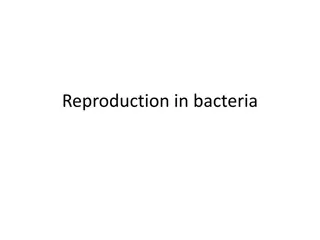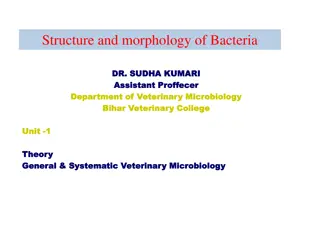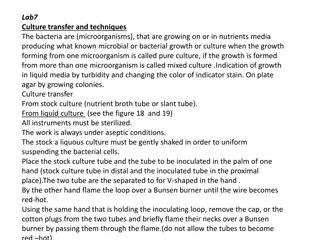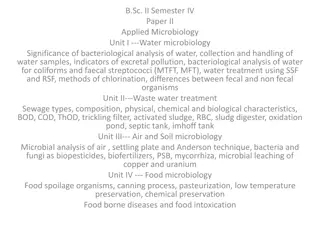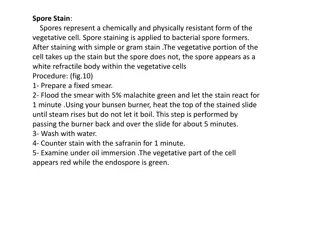Understanding Bacterial Growth and Reproduction in Microbiology
Bacterial growth involves binary fission where cells divide into two, leading to the formation of new cells. The generation time varies among species. The growth curve consists of lag, exponential, stationary, and death phases, each with distinct characteristics. By understanding these phases, researchers can study and control bacterial populations effectively.
Download Presentation

Please find below an Image/Link to download the presentation.
The content on the website is provided AS IS for your information and personal use only. It may not be sold, licensed, or shared on other websites without obtaining consent from the author. Download presentation by click this link. If you encounter any issues during the download, it is possible that the publisher has removed the file from their server.
E N D
Presentation Transcript
Bacterial Growth & Reproduction Bacteria are multiply by a simple cell division known as binary fission (splitting into two). The single piece of DNA reproduces itself exactly. When bacterial species produce several forms, these variants are called strains. The calculation of bacterial growth is fairly simple, since each original cell divides to form two new cells, with the loss of the original parent. the calculation series describing growth is: 1, 2, 4, 8, 16, etc.
The generation time (time needed for the cell to divide into two-Doubled) differs according to species and prevailing conditions. For example, a bacterium that divides every 30 min has a generation time of 30 min.
The bacterial growth curve Bacterial growth over time can be graphed as cell number versus time. This is called a growth curve. This curve typically has four distinct phases: Lag Exponential Stationary Death phase (log) phase phase phase
- Lag phase: * Is the first phase. * No increase in cell number * Cells are actively metabolizing, in preparation for cell division. * It may be short or very long, according to the growth medium.
- Exponential or log phase: * Is the second phase. * called the exponential or log phase. * This is the period in which the cells grow most rapidly, doubling at a fairly constant rate. - Stationary phase: * Is third phase . * metabolism slows. * cells cease rapid cell division. * high cell density, depletion of nutrients, accumulation of waste products.
- Death phase: * Is the final phase . * Cells are quickly losing the ability to divide.
Factors affecting bacterial growth - Many factors affect the generation time of the bacterium: - Temperature. - pH. - Oxygen. - Salt concentration. - Nutrients. - Most bacteria grow best when these parameters are optimum.
Temperature - According to the temperature degree that bacteria can grow and/or survive, they can be classified to:
Temperature Psychrophiles ) ( Mesophiles Thermophiles Hyperthermophiles


